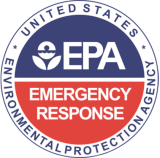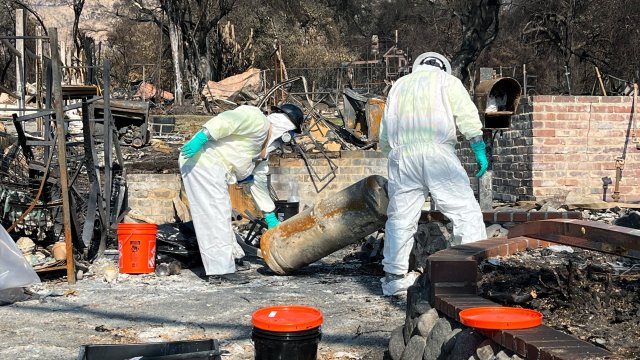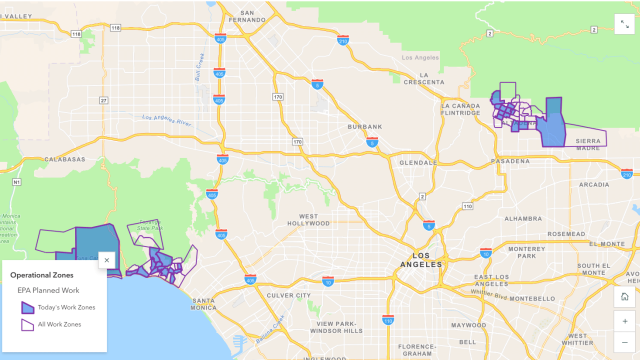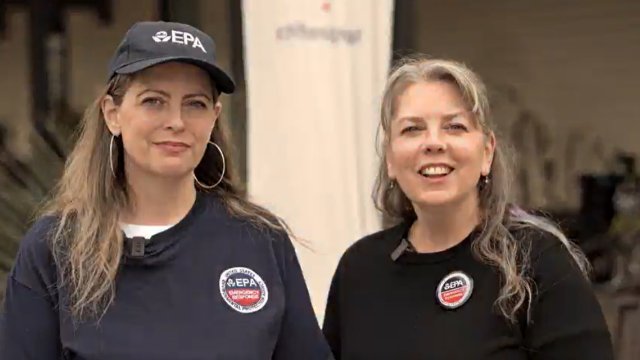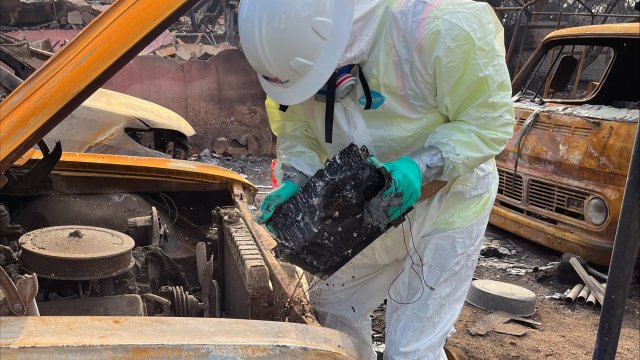2025 Southern California Wildfires
-
2025 Southern California Wildfires
EPA’s work was part of an all-of-government response to the Los Angeles wildfires.
On January 7, 2025, a series of catastrophic wildfires developed in Los Angeles County. The Federal Emergency Management Agency (FEMA) assigned EPA to assess, remove, and safely dispose of hazardous materials from all burned areas.
This effort, which was the first phase of the overall recovery from the Los Angeles wildfires, was part of the largest wildfire hazardous materials cleanup in the history of the EPA. Together with the support of our partners, more than 1600 staff identified and then cleared hazardous materials from properties in both fire footprints, finishing just 29 days after beginning our work in the field.
EPA’s household hazardous material removal work was part of an all-of-government response to the Los Angeles wildfires, with the support and collaboration of partners including FEMA, USACE, the US Coast Guard, the State of California, State Parks, California Department of Toxic Substances Control (DTSC), the City and County of Los Angeles, and the South Coast Air Quality Management District (SCAQMD).
EPA crews also worked to remove and safely dispose of more than 1,000 lithium-ion batteries from vehicles, homes and other battery powered products. EPA established staging areas to safely sort and package hazardous materials collected in the Eaton and Palisades fire areas for final disposal. EPA has conducted post-operations soil sampling at each staging area to ensure that there was no environmental impact.
FEMA also assigned EPA to provide water infrastructure technical assistance, and a long-term recovery Sustainability Advisor.
Under EPA's assignment to provide water infrastructure technical assistance, EPA coordinated across water sector partners at the utility, County, State and federal levels to establish a Drinking Water Working Group. This group facilitated reporting of operational and drinking water advisory statuses and identification of unmet needs in the water sector.
As of March 25, 2025, eight of nine affected public water systems have restored normal operations and are working quickly to restore services where needed. EPA remains committed to supporting the restoration process for these drinking water utilities alongside FEMA and USACE.
EPA’s full-time Disaster Recovery Coordinator and Sustainability Advisor is assisting in rebuilding in Los Angeles communities, with a focus on developing resiliency capabilities to confront future disasters. The Disaster Recovery Coordinator/Sustainability Advisor is collaborating with local and state departments and federal agencies to understand local priorities and identify potential funding sources for long-term recovery.
EPA also continues to engage with the Los Angeles County Department of Public Health's Health and Social Services Recovery Task Force, specifically through their Subcommittee on Assessing & Mitigating Environmental Health Impacts. The subcommittee focuses on evaluating environmental health impacts across key areas, including water (recreational and drinking), air, soil, and indoor environments. Results from these efforts and the LA County post-fire air, soil, and water assessment plan can be found at LA Department of Public Health.
For Los Angeles County recovery resources, please visit LA County Recovers.
Continue reading additional background information about EPA's response work.
Track the progress of EPA’s efforts via the Wildfire Response Story Map.
Learn more from Federal Emergency Management Agency, USA.gov, and the State of California.
-
USA.GOV
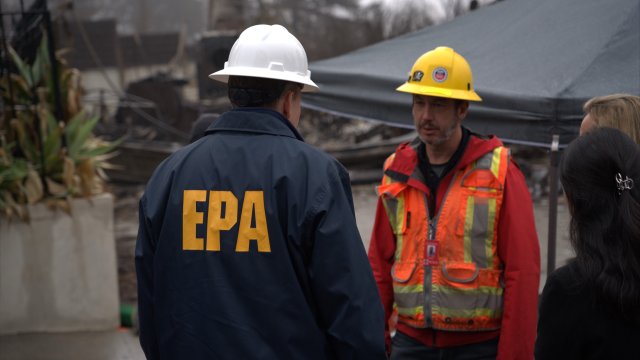
Learn how the U.S. Government is responding and find resources to help you recover.
Public Inquiries
EPA has concluded its response work. Please direct any inquiries regarding ongoing debris removal and related matters to the U.S. Army Corps of Engineers, at:
Staging Areas
Learn About EPA Staging Areas, locations where collected waste is sorted and loaded for shipment.

